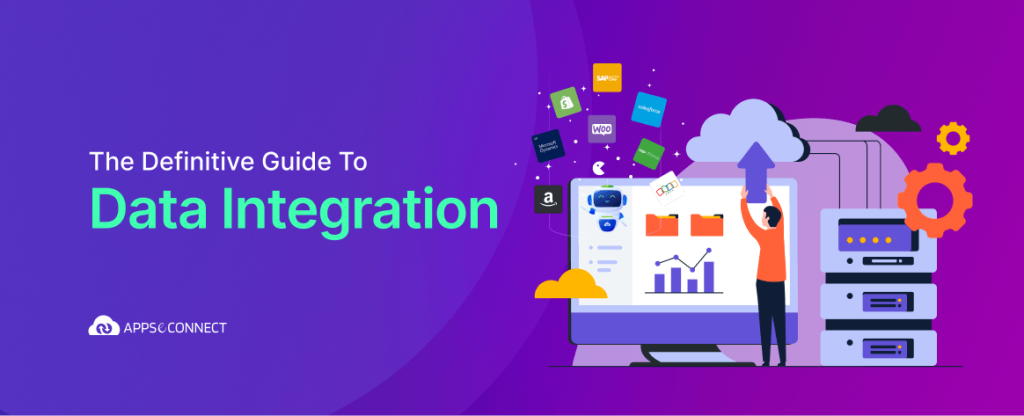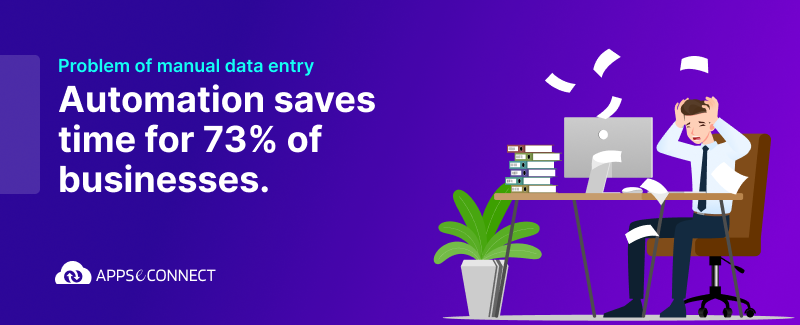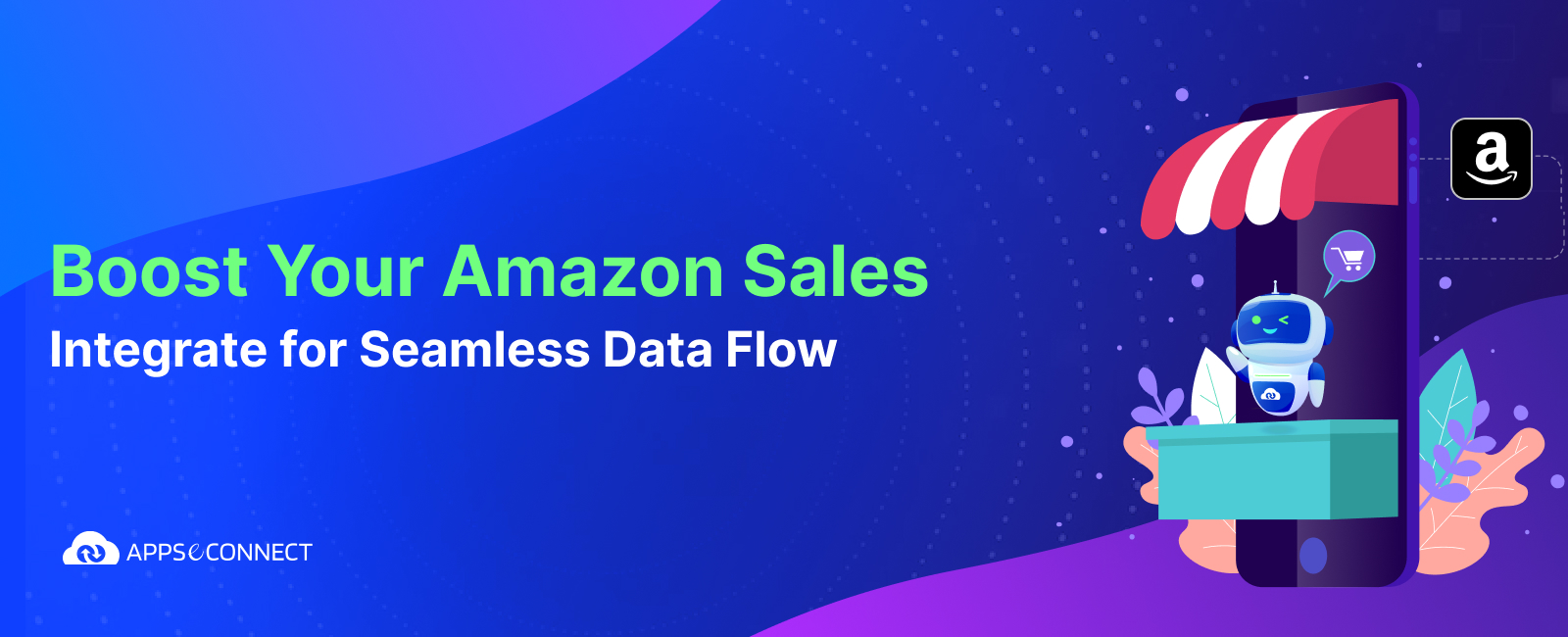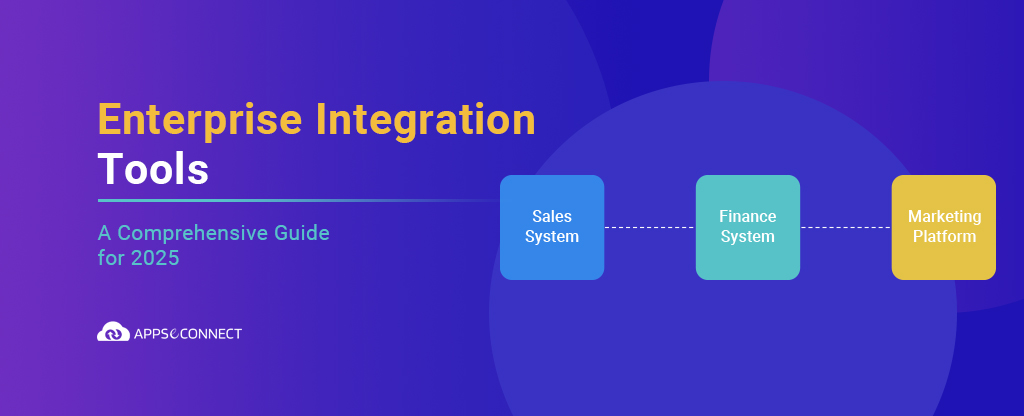We live in an era where businesses are constantly generating and managing vast amounts of data. From customer interactions to sales figures, inventory management to marketing campaigns, data is at the heart of every decision-making process. However, this data is often fragmented, scattered across different systems, applications, and databases, making it challenging for businesses to extract meaningful insights and make informed decisions. This is where data integration comes into play.
With data integration, these data sources can be seamlessly connected, allowing the company to gain a 360-degree view of its business. By integrating datasets from CRM, ERP, and inventory systems, the company can analyze customer purchase patterns, optimize inventory levels based on demand, and improve the overall customer experience.
But while all that sounds exciting and useful for your business, you can’t just rush into the data integration process without having solid knowledge about what integration truly means for your organization.
So in this definitive guide, we will explore what data integration is, how it works, different data integration tools and methods, practical use cases across various industries, the benefits of data integration, and considerations and best practices for implementing data integration strategies.
What is Data Integration?
Data integration refers to the process of combining data from different sources into a unified view, making it easier to access, manage, and analyze. In today’s digital age, businesses deal with a multitude of systems and applications, each generating its own set of data. This data often resides in silos, scattered across various databases, cloud services, and applications, making it challenging to derive meaningful insights.
Imagine a scenario where a company uses different software for customer relationship management (CRM), sales tracking, and inventory management. Each of these systems stores critical data relevant to key business processes, such as customer information, sales figures, and inventory levels. However, without data integration tools, these systems operate independently, leading to disjointed information and inefficiencies.
Data integration solution bridges these gaps by harmonizing data from disparate sources, ensuring that information is consistent, accurate, and up-to-date across the organization. It enables businesses to create a single, comprehensive view of their data, providing valuable insights that drive better decision-making and operational efficiency.
For example, by integrating CRM, sales, and inventory systems, a business can gain a holistic view of its customers. It can track customer interactions from initial contact to purchase and beyond, allowing for personalized marketing campaigns, improved customer service, and optimized inventory management.
In essence, data integration process transforms isolated data into a cohesive resource, empowering businesses to unlock the full potential of their data and drive success.
How Does Data Integration Work?
At its core, data integration works by extracting data from multiple sources, transforming it into a common format, and then loading it into a target system. This process ensures that the data is consistent, accurate, and up-to-date, enabling businesses to make informed decisions based on real-time information. This process involves several steps:
- Data Extraction: Data is extracted from different sources, which can include databases, applications, files, and other repositories.
- Data Transformation: Extracted data is transformed into a common format or structure to ensure consistency and compatibility. This step may involve cleaning, filtering, aggregating, and converting data.
- Data Loading: Transformed data is loaded into the target destination, such as a data warehouse or database. This step may include indexing and organizing data for efficient storage and retrieval.
- Data Synchronization: In some cases, data integration involves keeping the data in sync between the source and target systems to ensure that the integrated view is up to date.
- Data Quality Assurance: Data integration process often includes measures to ensure data quality, such as data validation, deduplication, and error handling.
- Data Delivery: The integrated data is made available to users or applications through various means, such as reports, dashboards, APIs, or data services.
Data integration is essential for businesses to gain insights from their data by providing a unified and consistent view of information across the organization.
Data Integration Tools and Methods
There are a variety of data integration tools and methods to ensure seamless flow and consolidation of data across disparate systems. These tools and methods are crucial for businesses looking to integrate their data effectively. Here are some common approaches:
ETL (Extract, Transform, and Load)
ETL, short for extract, transform, and load, is a traditional method used to integrate data. It involves extracting data from different sources, transforming it into a format that is compatible with the target system, and then loading it into the target database or data warehouse. ETL tools automate this process, making it easier to manage large volumes of data.
Pros:
- Suitable for batch processing of large volumes of data.
- Transformation allows for data cleaning and enrichment.
- Well-established and widely used in traditional data warehousing.
Cons:
- May introduce latency as data is processed in batches.
- Complex transformations can be challenging to implement.
- Requires significant upfront design and planning.
Use Cases:
- Data warehouse where historical data needs to be consolidated.
- Business intelligence and reporting where data needs to be cleaned and transformed before analysis.
ELT (Extract, Load, Transform)
ELT is a variation of ETL where the data is first extracted and loaded into the target system before being transformed. This approach is useful for situations where raw data needs to be stored for further analysis before transformation.
Pros:
- Allows for storing raw data for future analysis.
- Can leverage the power of modern data warehouses for transformation.
- Simplifies the ETL process by separating extraction and loading from transformation.
Cons:
- May require more storage space for storing raw data.
- Transformation may be more complex as it needs to be done within the target system.
- Not suitable for real-time data integration systems.
Use Cases:
- Big data analytics where raw data needs to be stored for further processing.
- Data lakes where unstructured and semi-structured data is stored for future analysis.
Middleware or iPaaS (Integration Platform as a Service)
Middleware and iPaaS solutions provide a platform for integrating different applications and systems. These solutions often include pre-built connectors and integration workflows, making it easier to connect and synchronize data between systems.
Pros:
- Provides a unified platform for integrating diverse applications and systems.
- Offers pre-built connectors for popular applications, reducing development time.
- Supports real-time and batch data integration scenarios.
Cons:
- Costly, especially for large-scale integration needs.
- May require customization for complex integration scenarios.
- Relies on the availability and reliability of the middleware provider.
Use Cases:
- Cloud application integration where on-premises and cloud applications need to be connected.
- Low-code integration for businesses that can be executed quickly and efficiently.
API Integration
APIs (Application Programming Interfaces) allow different systems to communicate and share data with each other. API integration is a common method used to integrate cloud-based applications and services, enabling real-time data exchange.
Pros:
- Supports real-time data integration and synchronization.
- Provides flexibility in integrating diverse systems and applications.
- Allows for secure data exchange using authentication and authorization mechanisms.
Cons:
- Requires development effort to implement and maintain APIs.
- May incur additional costs for API usage and maintenance.
- Performance may be affected by network latency and API rate limits.
Use Cases:
- SaaS application integration where cloud-based applications need to be connected.
- Mobile application integration where mobile apps need to access backend services via APIs.
Data Virtualization
Data virtualization is a another data integration system or method that allows applications to retrieve and manipulate data without needing to know where the data is physically located or how it is formatted. It provides a unified view of data from various sources without moving or copying the data.
Pros:
- Provides a unified view of data from different sources.
- Eliminates the need to physically move or copy data.
- Simplifies data access and manipulation for applications and users.
- Supports real-time data integration and access.
Cons:
- May introduce latency in data access.
- Requires careful management of data access and security.
- Performance may be impacted by the complexity of data virtualization.
Use Cases:
- Integrating from various sources for real-time analytics.
- Providing a unified view of customer data for improved customer service.
- Aggregating data from different systems for business intelligence and reporting.
Other Methods
Other data integration methods include CDC (Change Data Capture), which captures and synchronizes only the changed data, and EAI (Enterprise Application Integration), which focuses on integrating different enterprise applications.
Change Data Capture (CDC):
Pros: Efficient for real-time data synchronization.
Cons: Requires support from source systems for change tracking.
Enterprise Application Integration (EAI):
Pros: Integrates diverse enterprise applications.
Cons: Complex and requires expertise in enterprise architecture.
Each of these methods has its strengths and is suitable for different integration scenarios. Businesses should choose the method that best fits their data integration needs and infrastructure.
Data integration Use Cases
Data integration system plays a crucial role in various business scenarios, enabling organizations to streamline operations, enhance decision-making, and improve overall efficiency. Here are some key areas where data integration has a significant impact and strong use cases.
Ecommerce Management
In the realm of ecommerce, data integration is essential for managing product information, inventory, and customer data across multiple channels. By integrating from various sources, ecommerce businesses can create a seamless shopping experience for customers and optimize their operations.
Use Case 1: Product Information Management
Ecommerce business processes often deal with a large number of products, each with its own set of attributes and specifications. Data integration allows businesses to consolidate product information from different sources, such as suppliers and manufacturers, into a central repository. This centralization of product data enables businesses to maintain consistency across channels, update product information in real time, and improve the accuracy of product listings.
Example: A clothing retailer uses data integration to consolidate product information from multiple suppliers. This allows the retailer to easily update product details, such as pricing and availability, across their ecommerce platform and ensure that customers always have access to accurate information.
Use Case 2: Inventory Management
Effective inventory management is crucial for ecommerce businesses to meet customer demand while minimizing costs. Data integration allows businesses to integrate inventory data from various sources, such as warehouses, stores, and suppliers, into a centralized system. This integrated view of inventory helps businesses optimize stock levels, reduce stockouts, and improve order fulfillment processes.
Example: An online electronics retailer uses data integration to synchronize inventory levels across its website and physical stores. This integration ensures that customers can see real-time stock availability and helps the retailer avoid overselling products.
Supply Chain Management
In supply chain management, data integration is vital for optimizing the flow of goods, information, and finances across the supply chain. By integrating from various supply chain partners and systems, organizations can improve visibility, collaboration, and decision-making.
Use Case 1: Demand Forecasting
Accurate demand forecasting is essential for minimizing stockouts and excess inventory. Data integration allows organizations to combine historical sales data, market trends, and other relevant data sources to create more accurate demand forecasts. This integrated approach to demand forecasting helps organizations optimize inventory levels, reduce costs, and improve customer satisfaction.
Example: A consumer goods manufacturer uses data integration to combine sales data from retailers, market research data, and internal production data to forecast demand for its products. This integrated approach helps the manufacturer anticipate demand fluctuations and adjust production accordingly.
Use Case 2: Supplier Relationship Management
Effective supplier relationship management is crucial for ensuring timely delivery of goods and maintaining strong partnerships with suppliers. Data integration helpsorganizations to integrate supplier data, such as performance metrics, delivery schedules, and pricing information, into a centralized system. This integrated view of supplier data helps organizations manage supplier relationships more effectively and make informed decisions about sourcing and procurement.
Example: A global retailer uses data integration to consolidate supplier data from its various regional offices. This integration allows the retailer to evaluate supplier performance across regions, negotiate better terms with suppliers, and improve overall supply chain efficiency.
ERP-CRM Integrations
Integrating ERP and CRM systems is essential for ensuring that organizations have a unified view of their customers and operations. By integrating from these systems, organizations can improve customer service, increase operational efficiency, and drive better business outcomes.
Use Case: Customer 360 View
Integrating ERP and CRM systems allows organizations to create a comprehensive view of their customers, including their purchase history, interactions with customer service, and feedback. This 360-degree view enables organizations to personalize their marketing efforts, improve customer service, and identify new business opportunities.
Example: A telecommunications company integrates its ERP system, which contains billing and service data, with its CRM system, which tracks customer interactions. This integration allows the company to provide personalized offers to customers based on their usage patterns and preferences.
Data Warehousing
Data integration is fundamental to data warehousing, where data from various sources is consolidated into a central repository for analysis and reporting. By integrating from disparate sources, organizations can create a single source of truth for their data, enabling more informed decision-making.
Use Case: Centralized Reporting and Analysis
Data integration allows organizations to consolidate data from different sources, such as transactional systems, CRM systems, and marketing databases, into a data warehouse. This centralized repository of data provides a foundation for reporting and analysis, allowing organizations to gain insights into their business performance and make data-driven decisions.
Example: A retail chain integrates data from its point-of-sale systems, inventory management systems, and customer loyalty programs into a data warehouse. This integration enables the company to analyze sales trends, optimize inventory levels, and create targeted marketing campaigns.
BI/Analytics
Data integration is essential for BI and analytics initiatives, where data from various sources is combined and analyzed to uncover insights and drive strategic decision-making. By integrating from disparate sources, organizations can gain a comprehensive view of their business and make informed decisions.
Use Case: Real-Time Analytics
Integrating from operational systems, IoT devices, and external sources allows organizations to perform real-time analytics. This capability enables organizations to monitor key metrics, such as sales performance and customer behavior, in real time and make immediate adjustments to their business strategies.
Example: A manufacturing company integrates data from its production equipment, supply chain systems, and market research reports into a BI platform. This integration enables the company to monitor production efficiency, identify supply chain bottlenecks, and respond quickly to changing market conditions.
Benefits of Data integration in Various Industries
Data integration offers a wide range of benefits to organizations across various industries. By integrating from disparate sources, organizations can improve decision-making, enhance operational efficiency, and drive innovation. Here are some key benefits of data integration in different industries:
Healthcare
Improved Patient Care: Data integration lets healthcare organizations to create a comprehensive view of patient data, including medical history, lab results, and treatment plans. This integrated view of patient data helps healthcare providers make more informed decisions and improve patient outcomes.
Enhanced Operational Efficiency: Data integration streamlines administrative processes, such as billing and scheduling, leading to improved efficiency and reduced costs. By integrating from various systems, healthcare organizations can also improve care coordination and communication among healthcare providers.
Retail
Personalized Customer Experience: Data integration makes it possible for retailers to gather and analyze customer data from various sources, such as online purchases, in-store transactions, and social media interactions. This integrated view of customer data allows retailers to personalize their marketing efforts and improve customer loyalty.
Inventory Optimization: By integrating from point-of-sale systems, inventory management systems, and supply chain systems, retailers can optimize inventory levels, reduce stockouts, and improve overall inventory management.
Finance
Risk Management: Data integration helps financial institutions consolidate data from various sources, such as transaction records, market data, and customer information, into a central repository. This integrated view of data enables financial institutions to better assess and manage risks.
Compliance: Data integration facilitates regulatory compliance by ensuring that financial institutions have accurate and up-to-date information for reporting and auditing purposes. By integrating from disparate sources, financial institutions can ensure data consistency and accuracy, reducing the risk of non-compliance.
Manufacturing
Supply Chain Optimization: Data integration enables manufacturers to integrate data from suppliers, production systems, and distribution channels to optimize supply chain operations. By gaining real-time insights into supply chain performance, manufacturers can reduce costs, improve efficiency, and enhance customer satisfaction.
Quality Control: By integrating from production processes, quality control systems, and customer feedback, manufacturers can improve product quality and reduce defects. This integrated approach to quality control helps manufacturers meet customer expectations and maintain a competitive edge.
Data Integration Challenges
While data integration offers numerous benefits, organizations often face several challenges when implementing data integration initiatives. These challenges can arise from technical, organizational, and data-related issues. It is essential for organizations to be aware of these challenges and address them proactively to ensure the success of their data integration projects. Some common data integration challenges include:
Data Quality
Inconsistent Data Formats: Data integration often involves integrating from disparate sources, which may use different data formats and structures. This can lead to challenges in mapping and transforming data to ensure consistency and accuracy.
Data Duplication: Integrating from multiple sources can result in data duplication, where the same data is stored in multiple places. This can lead to data inconsistencies and make it difficult to maintain data integrity.
Integration Complexity
Integration of Legacy Systems: Many organizations still rely on legacy systems that may not be designed for easy integration with modern systems. Integrating from these legacy systems can be complex and require specialized skills and tools.
Real-Time Integration: As organizations increasingly rely on real-time data for decision-making, the need for real-time data integration has grown. Real-time integration requires robust infrastructure and data processing capabilities.
Organizational Challenges
Data Governance: Data integration raises concerns about data governance, including data privacy, security, and compliance. Organizations need to establish clear policies and procedures for data governance to ensure that data is handled appropriately.
Organizational Resistance: Implementing data integration initiatives may face resistance from within the organization, including from employees who are accustomed to existing processes and systems. Overcoming this resistance requires effective change management strategies.
Scalability and Performance
Scalability: As organizations’ data volumes grow, scalability becomes a critical issue in data integration. Organizations need to ensure that their data integration solutions can scale to handle large volumes of data efficiently.
Performance: Data integration processes need to be optimized for performance to ensure timely delivery of data to end-users. This requires tuning data integration processes and infrastructure to minimize latency and ensure high throughput.
Data Security
Data Breaches: Integrating data from multiple sources increases the risk of data breaches. Organizations need to implement robust security measures, such as encryption and access controls, to protect data from unauthorized access.
Data Loss: Inadequate data backup and recovery mechanisms can result in data loss during data integration processes. Organizations need to implement reliable data backup and recovery strategies to minimize the risk of data loss.
Data Integration Key Considerations and Best Practices
Effective data integration requires careful planning and execution to ensure that data is integrated accurately, securely, and efficiently. Here are some key considerations and best practices to keep in mind when implementing data integration initiatives:
-
- Define clear objectives and goals for the project: Identify specific data sources, desired outcomes, and key performance indicators (KPIs) to measure success.
- Assess data quality: Before integrating data, evaluate its quality to address inconsistencies, errors, and duplications, establishing standards for accuracy and completeness.
- Choose the right integration approach: Consider factors like data volume, latency requirements, and budget constraints to determine whether batch processing, real-time integration, or data virtualization is most suitable.
- Implement robust security measures: Protect sensitive data with encryption, access controls, and data masking to prevent unauthorized access and breaches.
- Ensure scalability and performance: Confirm that the solution can handle large data volumes and meets performance requirements for timely data delivery.
- Establish clear data governance policies and procedures: Define ownership, quality standards, and compliance with regulations to manage data effectively.
- Use automation and orchestration: Streamline processes with automation tools for repetitive tasks and orchestration tools for managing complex workflows.
- Monitor and measure performance regularly: Track key metrics such as data quality, latency, and throughput to identify areas for improvement.
- Ensure stakeholder buy-in and involvement: Engage all stakeholders, including senior management, in the planning and implementation of the project.
- Continuously improve data integration processes: Regularly review and refine processes to meet organizational needs and drive business value.
Conclusion
All in all, data integration is a critical process for businesses looking to harness the power of their data. By integrating data from disparate sources, organizations can gain a comprehensive view of their business, improve decision-making, and drive innovation. However, data integration is not without its challenges, including data quality issues, integration complexity, and organizational resistance.
To overcome these challenges, organizations must define clear objectives, assess data quality, choose the right integration approach, implement robust security measures, and ensure scalability and performance. By following best practices such as establishing clear data governance policies, using automation and orchestration, monitoring performance, and continuously improving processes, organizations can successfully implement data integration initiatives and unlock the full potential of their data.
APPSeCONNECT – The Leading Platform for Data Integration
Looking to supercharge your data integration capabilities? Explore the possibilities with APPSeCONNECT!
Our robust integration platform offers seamless connectivity between all your applications, empowering you to automate processes, synchronize data, and unlock valuable insights.
Whether you’re looking to streamline your operations, improve customer experiences, or drive growth, APPSeCONNECT has you covered. Our easy-to-use platform is designed to scale with your business, ensuring that you stay ahead in today’s competitive landscape.





















